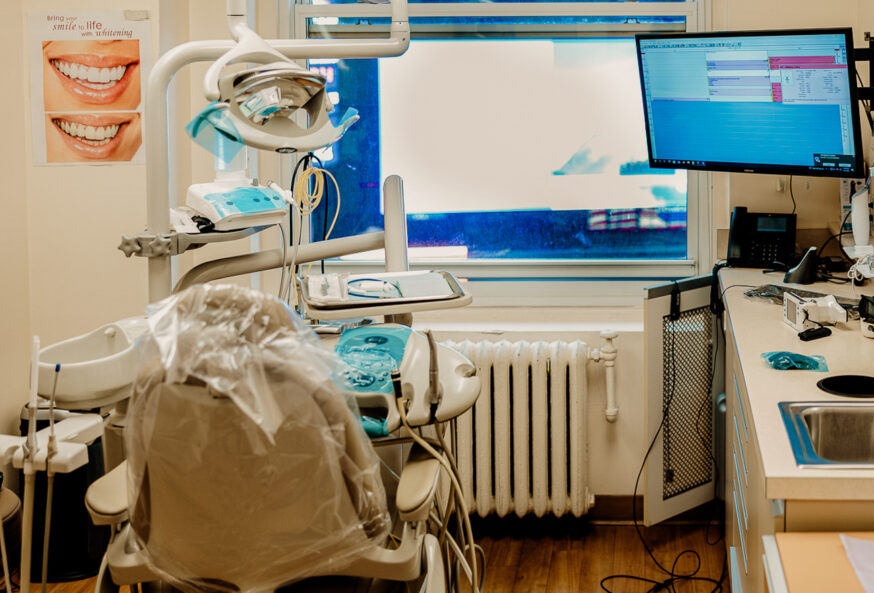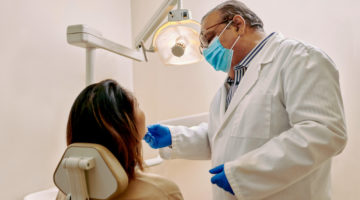This article was originally published in 2022 and updated in 2023 for new best practices.
One of the keys to the success of your dental practice is managing overhead. Our 2022 Dental Industry Report found that lowering costs is a priority for dentists. Lowering your dental practice’s overhead percentages can seem daunting, but it really comes down to six simple steps. What are those steps? And what should your overhead breakdown be? We’ll answer those questions and provide steps for implementing an overhead management plan in your practice.
Step 1: Use data to find your dental office overhead percentages
As any good clinician knows, creating an effective treatment plan begins with a detailed assessment. Similarly, the first step to lowering your dental practice’s overhead is finding out where you stand and how your numbers compare with industry benchmarks. Use key performance indicators (KPIs) to measure and manage your practice through reliable data.
In an article for Dental Economics, dental business advisor Mark J. Nadaud, CPA/ABV notes that “identification, analysis, and implementation” of KPIs is a critical-but-often-overlooked means of understanding the economic health of a practice. “The idea is to be able to identify, track, and analyze various metrics in order to make more informed and strategic business decisions,” Nadaud writes.
Nadaud recommends the use of supplemental reports to provide more detailed insights. “In addition to monthly or quarterly financial statements, I recommend that an owner obtain supplemental reports to allow him or her to track performance statistics to fully understand where the practice currently is, how it compares to prior periods, and whether it is in line with industry benchmarks.” This supplemental data could include production per day, active patient count, new patients per month, and treatment acceptance rate.
Step 2. Dig into the data and ask ‘Why?’
Once you gain insight into your current status, it’s important to dig into the data to understand what’s contributing to your numbers. Nadaud says the average dental practice overhead is 55%-65%. That aligns with a 2021 Dental Buyer Advocates study that found the median practice overhead for the year to be 61.9%.
Some of that overhead results from fixed costs that remain the same no matter how many patients walk through the door. In contrast, variable costs—such as those for dental supplies and dental laboratory services—are linked to production. Lab fees don’t just include the price on your invoices, either. If you’re using a highly versatile digital lab, your staff won’t have to fill out paperwork for every order, and waste time processing and shipping physical molds and impressions. Not to mention the incredibly fluid (and often quite expensive) shipping costs you can’t control — unless you switch to a digital lab.
And when it comes to other, surprising laboratory expenses, important factors to consider include:
- Cost savings you may find by using a larger dental lab network or new technology
- The importance of clear communication to ensure a great relationship with your lab
- Use of photos to ensure quality lab work
- A focus on details to deliver clear requests
- The importance of feedback to help fine-tune your preferences
Other variable costs can also include factors that aren’t always obvious. That’s why it’s important to know the “true cost” of supplies by considering issues such as:
- Defective product returns
- Overstocked items held in inventory
- Shipping and handling charges
- Restocking fees
- Failure to maximize free offers
- Failure to receive credit for mistakes made by suppliers
Fixed vs. variable dental overhead costs
Each expense can be divided into status as a fixed or variable expense. Fixed expenses are those that cannot be easily changed, reversed, or reduced — this inflexibility can be the source of financial pressure on the rest of your practice. Especially since the dental industry often has high overheads. Still, the simple math works simply: every 1% you save on overhead is an additional 1% in profit.
Fixed expenses should comprise 4-7% of your production cost. These include rent, insurance, taxes, and utilities — the costs you can’t shop around for or negotiate lower.
Variable costs are where you can find those extra profit margins — like payroll, lab fees, and supplies. Due to labor shortages and the Great Resignation, costs like hygienist salaries and wages have as much as doubled. But hiring and training a replacement can be even more costly.
Variable expenses will occupy 45-55% of your operating cost, and as you get more granular with how you record expenses—salaries, supplies, equipment, lab fees—you can get more information about how you might lower expense and improve margins.
Step 3. Determine your ideal overhead percentages
Since variable costs are related to production, it’s important to view them in relation to the income generated. Writing for Inside Dentistry, Richard P. Gangwisch, DDS underscores the importance of this relationship: “Dentists should be wary of cutting any costs that could ultimately affect their production. Sometimes you have to spend money to make money.”
Once you have a balanced view of expenses, consider industry benchmarks for overhead percentages and try to adjust so that your breakdown is similar.
Recommended dental practice overhead percentages
Gangwisch says that generally, your dental practice overhead breakdown should look something like this:
- Salary ratios: 20% to 24% overall
- Laboratory: 8% to 10%
- Dental supplies: 5% to 6%
- Facility: 4% to 6% for renters; 5% to 8% for owners
- General administrative: 6% to 10%
- Marketing: 2% to 5%
- Doctor salary: 20% to 25%
- Retirement, reinvestment, and capital expenditures: 20% to 25%
Step 4. Create and implement a plan to decrease dental practice overhead percentages
Once you understand your costs, you can focus on profit. How you manage your costs directly impacts profit, and though it seems obvious, it’s worth stating: only profitable practices stay in business. Prioritizing excess expenses and reducing overhead is the part of management that will keep you profitable.
Gangwisch says dental practices can reduce overhead by following a few concrete steps:
- Track the effectiveness of marketing expenses and cut those that underperform.
- Consider renegotiating your lease if you’re willing to make a longer-term commitment.
- Compare laboratory prices—always keeping quality your first priority.
- Get quotes from multiple insurance companies to see if you can save on your rates.
- Compare the costs of disposable vs non-disposable items that can be effectively autoclaved.
- Research the potential savings of using one vendor for all of your supplies.
- Use an inventory control system that ensures you always have what you need without having an excess.
- Pay bills on time to avoid finance charges that can add up quickly.
- Maintain steady cash flow with an effective collection policy and credit options for patients who struggle to pay.
Now, remember: it is more expensive, with marketing and outreach and business relationships, to acquire a new customer than retaining an existing. And since referrals are a huge driver of dental business, it’s crucial to make sure reducing costs doesn’t diminish patient experience.
High staff morale leads to patient satisfaction — try not to cut costs that make your employees’ work more difficult. If you can take shipping off someone’s hands, consider it. Take a hard look at your workflows and tools and decide: are there areas where you can make changes to improve efficiency? Also consider wait times. Only 37% of younger patients are satisfied with the wait at their current dentist. How can you keep these long-term patients happy and returning with digital dental tools that decrease chair time and simplify workflows? If you are already using digital tools like an intraoral scanner, is your lab fully optimized to use digital scans?
Step 5. Communicate the new plan to your team
When everyone in your office understands the Why behind your plan, they can provide better support. Hold team meetings on a regular basis to review progress, and ask for feedback from everyone on your team. They may identify weaknesses in your workflow, supply chain, or laboratory processes that you have missed. When you encourage everyone to speak up and be part of the effort to decrease overhead costs, you provide the leadership your team needs to help the business succeed.
Step 6. Approach all options with an open mind
Instead of resisting the learning curve that might come with new technology such as a digital dental scanner, embrace it with the knowledge that it will help you in the long run.
- Hire strong candidates who can multitask. Instead of focusing only on recruiting those with dental office experience—consider what other experiences and skills may benefit your office. For instance, if you have a receptionist position to fill, consider a candidate who has customer service experience, but might be able to help with social media marketing, too. Need an office manager who will keep your office humming? Consider someone with the experience you need, and also the computer skills to clean up your systems and train others when they get stuck.
- Embrace a DIY mindset. Your office is full of equipment vulnerable to the need for repair—and those service calls can add up. There may be simple repair and maintenance tasks for which equipment technicians can provide training.
- Make the most of technology. Digital dentistry is not what it was 20 years ago. Digital tools and workflows have advanced significantly. These tools help dental practices optimize both patient care and the bottom line. Instead of resisting the learning curve that might come with new technology, embrace it with the knowledge that it will help you in the long run. If it seems overwhelming, find a digital dental partner that offers in-depth training for you and your staff.
Decreasing dental office overhead
Your dental practice overhead breakdown is the key to reducing cost and improving profit—and as a result, the key to the long-term health of your practice. It’s not easy, managing cost and benefit of seemingly simple variables, but if you follow the above steps (using the percentages as KPIs) and focus on efficiency, your dental office’s overhead percentages can work for you.
Variable costs like supplies and hidden costs inside supplies—think about how expensive it is to ship lab materials for every patient—may guide you to cheaper and more efficient solutions. A solution like Dandy’s intraoral scanning could help your practice not just reduce wait times and improve patient comfort, but also increase employee happiness—a long tail that increases patient retention and reduces employee attrition. It can be done, and you can do it—just focus on variable costs that lead to efficiency and happiness, and profit will follow.



